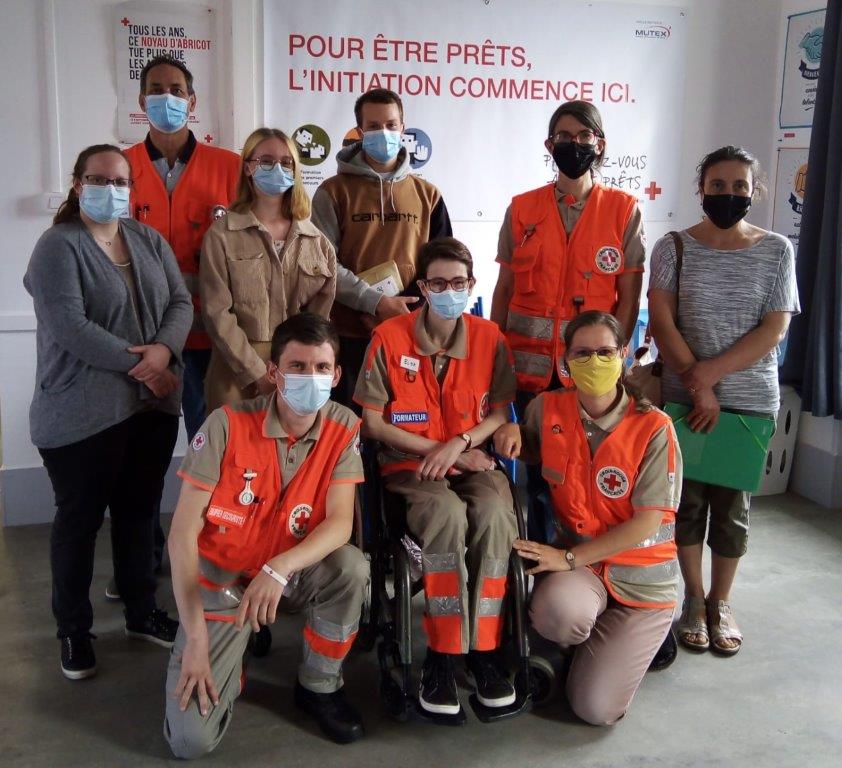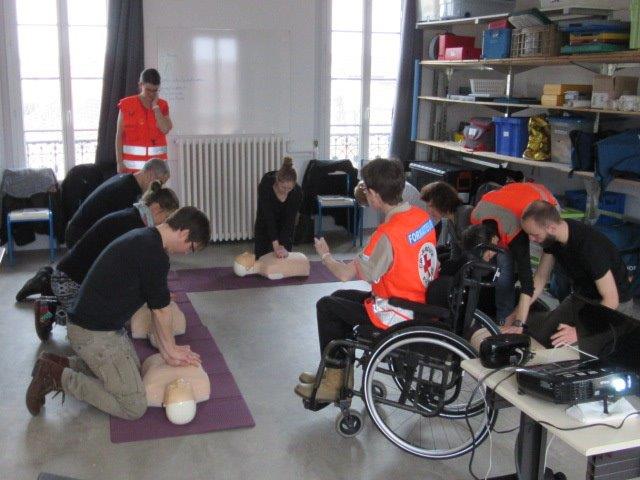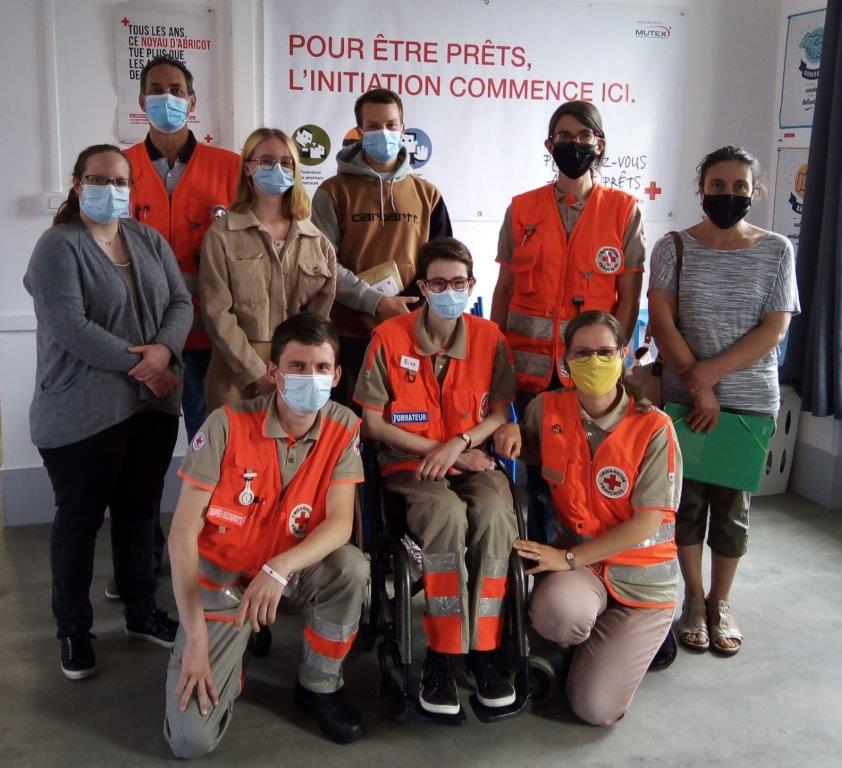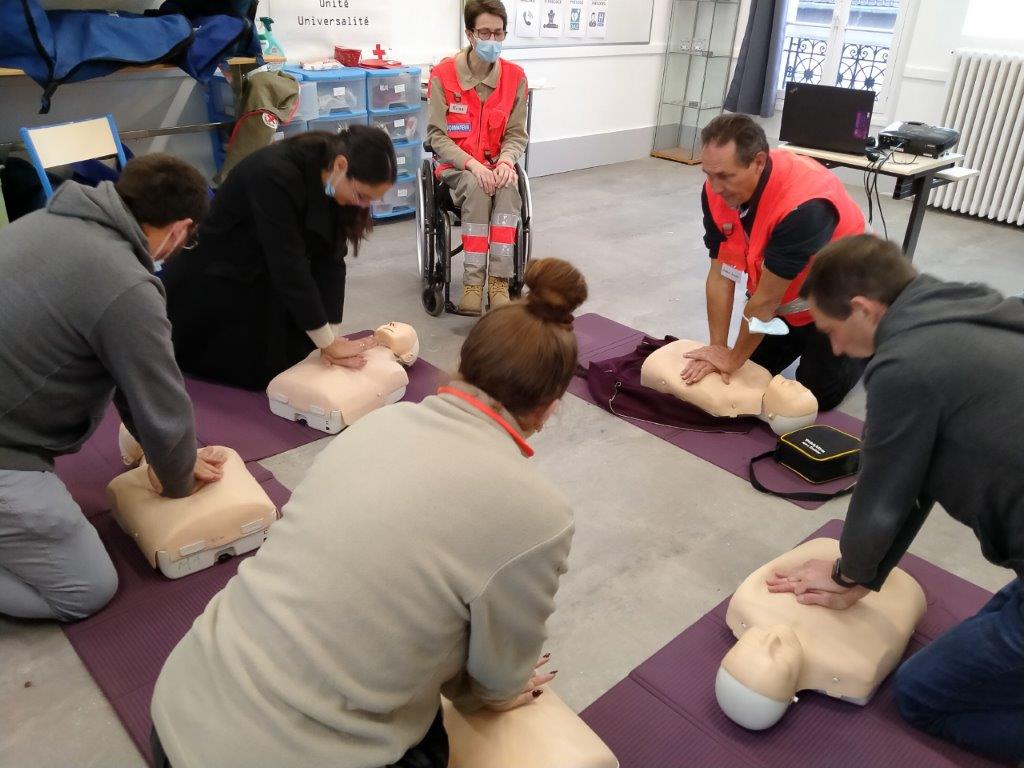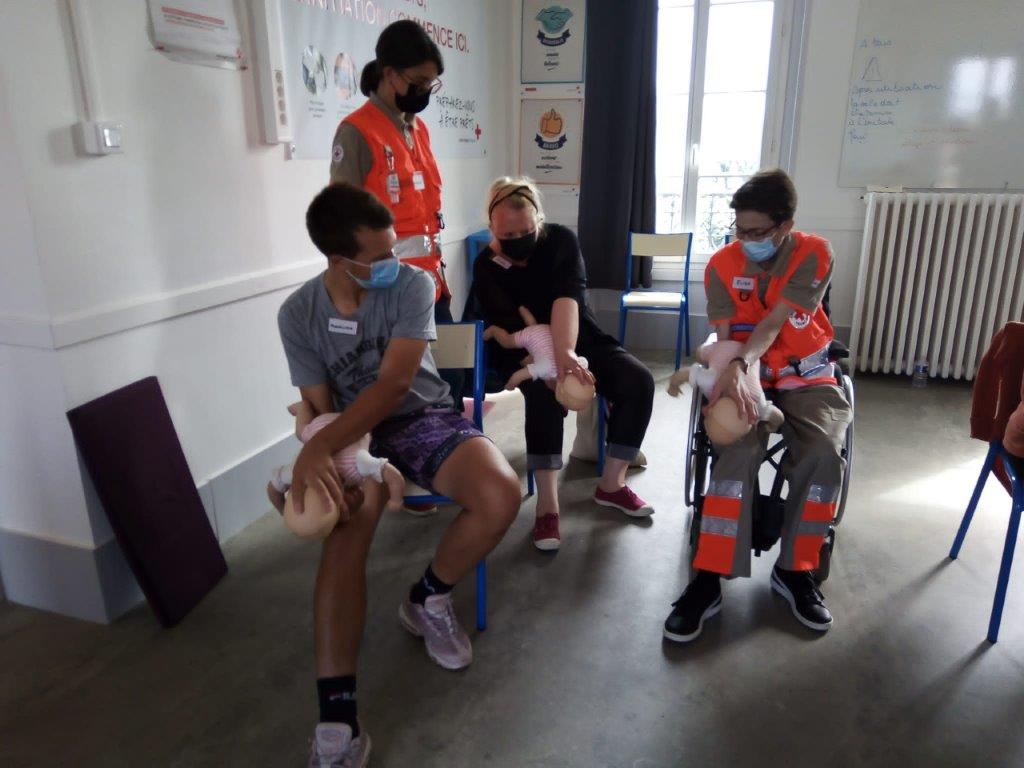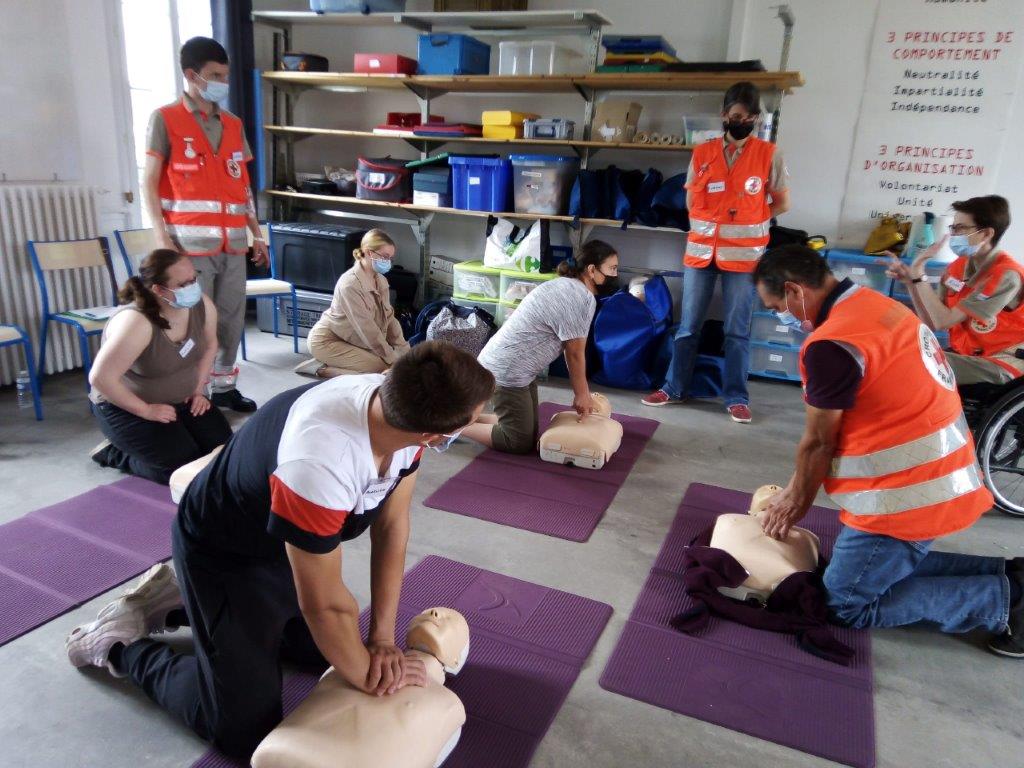Portrait of Elisa, passionate volunteer at the French Red Cross
Nearly one French person in five will have a disability during his or her life. In France, more than 80% of people with all kinds of disabilities become disabled in adulthood.
This change marks a turning point in their lives. They face a long phase of deconstruction, adaptation and reconstruction.
This reconstruction phase had a completely different meaning for Elisa, a volunteer with the French Red Cross and a first aid trainer. Suffering from Multiple Sclerosis (a degenerative neurological disease), she was able to reconnect with two of her passions: teaching and helping others. It is through a return to first aid training and thanks to the very good coaching of a trainer from the French Red Cross, that she was able to develop her skills and show that everyone can be “otherwise capable”.
1- What is the reason for your involvement in first aid?
The values and principles of the Red Cross Movement are in line with my own. I have always felt the need to be useful to others. Many members of my family are in the teaching and educational field, which may explain my interest in this area. The idea of returning to my job as a first aid trainer at the Red Cross became obvious. It didn’t seem that complicated to me, despite the fact that I am in a wheelchair. I was very motivated by the idea of getting involved in the association again.
2- What has been your career path within the National Society?
I joined the Red Cross in 1995. I gradually became a first-aider, a trainer in 1997 and an intervention leader. At the same time I got my diploma as a physiotherapist in 1998. In 2001, health problems forced me to stop everything from one day to the next.
As time went by, disability became an important part of my life. Fortunately, I remain relatively independent in my daily life and am well looked after. I have not been able to return to work. I realised that I was missing something to give meaning to my life. So in 2017, I decided to go to the forum of associations where the Red Cross was present to offer to resume my activity as a trainer. It was a daring gamble that initially left a few people perplexed, given that everything had changed. But that was without counting on my motivation… So in 2018 I set out to “get back in the saddle” in a wheelchair!
“People were doubtful but I was motivated”.
3- How did you experience this return to first aid after 15 years?
The return to training after all these years was quite destabilising. Diplomas had changed names, some techniques and teaching methods were no longer the same and had evolved. However, this did not reduce my motivation.
It must be said that I was very well supported by my sponsor, trainer of trainers, Frédéric, whom I had known since the beginning.
4- What adaptations were necessary?
I am able to prepare and run a training course in its entirety but, as I am in a wheelchair, I need assistants to set up the courses and give technical demonstrations. I usually have three, but with the health crisis, four assistants are not too many.
I organise a few preparatory sessions with my assistants: review of the technical gestures (which they will have to show to the learners), real-time demonstrations of what to do in the face of various emergencies, etc. I prepare a “script” for them in advance to guide them. Everyone has a role to play. Whatever happens, I do everything I can to make them feel confident, not to put them in difficulty and to remain benevolent towards them: they do an exemplary job and give a lot of themselves.
As for the learners, they say that they don’t see any difference between the way I conduct the training and the way a person in full possession of his or her physical abilities does.
5- Your training assistants seem to be important to you, has this led to any vocations?
Yes, they are essential to my training. Some of them come back regularly to assist me. It’s rewarding for them because they have more responsibility and reassuring because I’m always close to them, ready to help them if they need it. There is a really good atmosphere between us.
And yes, I think it has given rise to vocations as some of them are tempted to become trainers themselves.
6- What are your teaching techniques?
They are the same as those of other trainers. I just have to adapt to use the teaching tools. I need the help of my training assistants, especially on the logistical side, but I almost forget about my wheelchair.
The real adaptation is related to my tiredness. Traditionally, basic first aid training is done in one day at the French Red Cross but this is not feasible for me. So I split the training into two half-days. It’s more organisational but I’ve never had any difficulty in having complete sessions. I even find it better pedagogically speaking. The learners are more at ease because they have more time to understand and digest the information from one week to the next.
The only downside is that you have to free up two half-days over two weekends in a row…
“We need people who dare and show that it is not impossible.
7- Do you think that online training is the future of first aid?
It is a new way of approaching training: half remote at the participant’s pace and half face-to-face. It puts the participants at the heart of the action. Accompanied, they feel confident.
The French Red Cross teaching guide is well done and the activities are relevant. The national teaching team is always available if necessary. My first online and face-to-face first aid course went well overall. An experience to be repeated with some improvements, especially in the preparation of the assistants.
However, one must beware of the digital divide. Some people (including trainers) do not have computer tools. First aid training must remain open to all.
8- What commitments should decision-makers make regarding the inclusiveness of people with disabilities (especially in first aid)?
Disability is part of their lives. They should not be identified with it but considered as otherwise capable, i.e. able to do things, but differently.
The priority would be to continue to improve the accessibility of public places, bring premises into line with the law, etc. We also need to raise awareness and normalise disability. It doesn’t stop us from living and giving of ourselves.
9- What advice would you give to people with disabilities who are afraid to get involved?
You have to listen to your heart and your head, respect your needs and your limits. You have to take your time, think carefully about what you want to do and then do it. We need people who dare and who show that it is not impossible. Sometimes even disability gives another dimension to life and pushes the person to surpass himself. We must not devalue ourselves or feel weak because we need help. The purpose of a commitment is the meaning it has for us and the joy it gives us. It gives meaning to life and a sense of purpose. You have to try to do your best from day to day according to your physical, mental and emotional state.
There is a quote from the Dalai Lama that I particularly appreciate and that guides me in my daily life:
“If you think you are too small to do something, try sleeping with a mosquito and you will see which one keeps the other from sleeping.”

